If you’re a Harley-Davidson owner, you know that sputtering issues can be a frustrating and potentially dangerous problem. Sputtering can cause your bike to stall out unexpectedly, which can be especially dangerous if you’re in the middle of traffic. Fortunately, there are a variety of ways to troubleshoot and fix sputtering issues on your Harley.
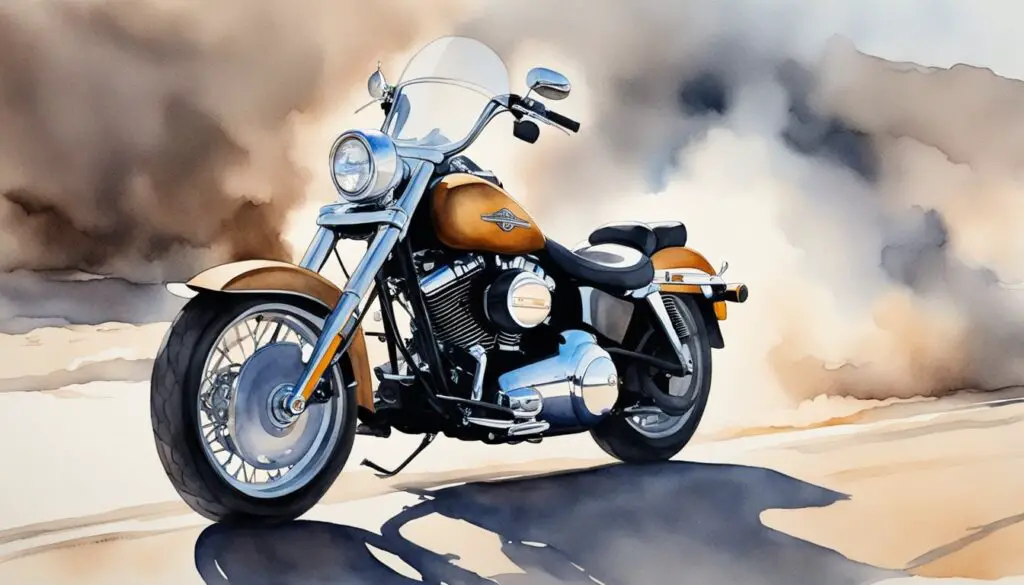
Understanding the basics of sputtering is the first step to diagnosing and fixing the problem. Sputtering is typically caused by a lack of fuel, air, or spark in the engine. This can be caused by a variety of factors, including dirty air filters, clogged fuel injectors, or faulty spark plugs. By understanding the underlying causes of sputtering, you can begin to diagnose and fix the problem on your own.
Troubleshooting sputtering issues on your Harley can be a complex process, but with the right knowledge and tools, you can get your bike running smoothly again. In this article, we’ll cover the basics of sputtering, common causes of sputtering on Harley-Davidson bikes, and tips for troubleshooting and fixing the problem. Whether you’re a seasoned mechanic or a beginner, this guide will help you get your Harley running smoothly again.
Key Takeaways
- Understanding the basics of sputtering is crucial to diagnosing and fixing the problem.
- Common causes of sputtering on Harley-Davidson bikes include issues with the fuel system, air intake and exhaust system, ignition system, and engine performance and sensors.
- Troubleshooting sputtering issues on your Harley requires a combination of diagnostic tools, maintenance best practices, and advanced diagnostics and solutions.
Understanding Sputtering: The Basics
What is Sputtering?
Sputtering is a common issue that Harley Davidson riders may experience from time to time. It is a symptom of a larger problem that needs to be addressed in order to keep your motorcycle running smoothly. Sputtering is when the engine starts to misfire, causing it to run rough and feel like it is hesitating or stumbling. This can be caused by a variety of factors, including fuel, air, spark, or engine problems.
Common Causes of Sputtering
There are several common causes of sputtering in Harley Davidson motorcycles. One of the most common causes is a dirty air filter. A dirty air filter can cause the engine to run lean, which can lead to sputtering. Another common cause is faulty spark plugs. If the spark plugs are worn or dirty, they may not be able to ignite the fuel properly, which can cause sputtering.
Fuel-related issues can also cause sputtering. If the fuel filter is clogged or the fuel pump is not working properly, the engine may not be getting enough fuel, which can cause sputtering. Additionally, if the fuel injectors are dirty or clogged, they may not be able to deliver the proper amount of fuel to the engine, which can also cause sputtering.
It is important to note that sputtering can also be a symptom of more serious engine problems, such as a malfunctioning fuel system, ignition system, or engine components. If you are experiencing sputtering, it is important to diagnose the problem as soon as possible to prevent further damage to your motorcycle.
In summary, sputtering is a common issue that Harley Davidson riders may face. It is important to understand the basics of sputtering, including what it is and the common causes. By addressing the underlying problem causing the sputtering, you can keep your motorcycle running smoothly and prevent further damage.
Fuel System Troubleshooting
If your Harley Davidson is sputtering, the issue may lie in the fuel system. Here are some things to check:
Fuel Quality and Contaminants
The first thing to check is the fuel quality. If the fuel in your motorcycle’s tank is old or contaminated, it can cause the engine to run poorly, leading to sputtering and loss of power. Bad gas can lead to dirt and debris in your fuel system, which can cause issues such as clogged fuel injectors or carburetors.
Inspecting the Fuel Filter
The fuel filter is an essential component of the fuel system. It ensures that debris and contaminants do not enter the engine. A dirty or clogged fuel filter can cause sputtering and loss of power. Inspect your fuel filter regularly and replace it if necessary.
Fuel Pump and Fuel Lines Check
The fuel pump and fuel lines are responsible for delivering fuel to the engine. High-pitched whining noises from the tank, engine sputtering or stalling, and reduced fuel efficiency are common fuel pump issues. Check for any leaks or damage to the fuel lines. A failing fuel pump motor, clogged fuel filter, or check valve failure can also cause issues.
Fuel Injectors and Carburetor Issues
Fuel injectors and carburetors are responsible for delivering the right amount of fuel to the engine. Clogged fuel injectors or carburetor jets can cause sputtering and loss of power. Use a fuel injector cleaner to clean the fuel injectors. If the fuel injectors are too clogged to clean, replace them with new ones. Inspect the carburetor for any damage or wear and replace any damaged parts.
Regular maintenance of your fuel system is essential to prevent sputtering issues. Inspect and clean your fuel system regularly to ensure that it is functioning correctly.
Air Intake and Exhaust System
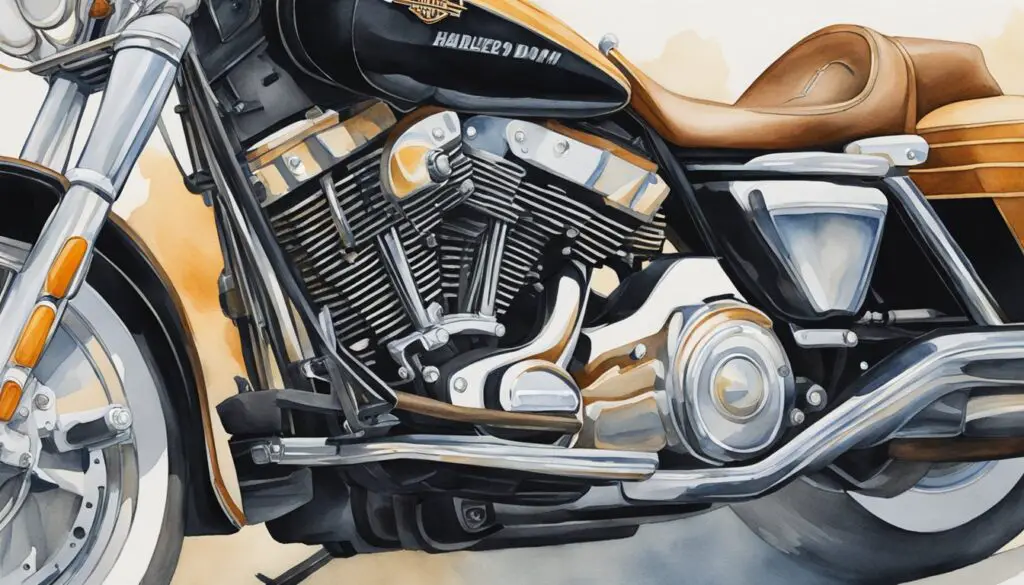
When it comes to Harley Davidson sputtering issues, the air intake and exhaust system can be a major culprit. Here are a few things to keep in mind when it comes to maintaining your air intake and exhaust system.
Air Filter Maintenance
Your air filter is an essential component of your air intake system. It is responsible for filtering out dirt, dust, and other debris from the air that enters your engine. Over time, your air filter can become clogged with dirt and debris, which can restrict the flow of air to your engine and cause it to sputter or stall.
To avoid this issue, it’s important to regularly maintain your air filter. You should inspect your air filter at least once a year and replace it if it looks dirty or clogged. If you ride in dusty or dirty conditions, you may need to replace your air filter more frequently.
Examining the Exhaust Path
Your exhaust system is responsible for removing the gases produced by your engine. If your exhaust system is clogged or damaged, it can cause your engine to sputter or stall.
To avoid this issue, you should regularly inspect your exhaust system. Look for any cracks, leaks, or loose connections in your exhaust pipes. Make sure your mufflers are not clogged or obstructed. Test your oxygen sensors and replace them if they are faulty, as they can impact the air-fuel mixture.
By maintaining your air intake and exhaust system, you can help prevent Harley Davidson sputtering issues and keep your bike running smoothly.
Ignition System Health
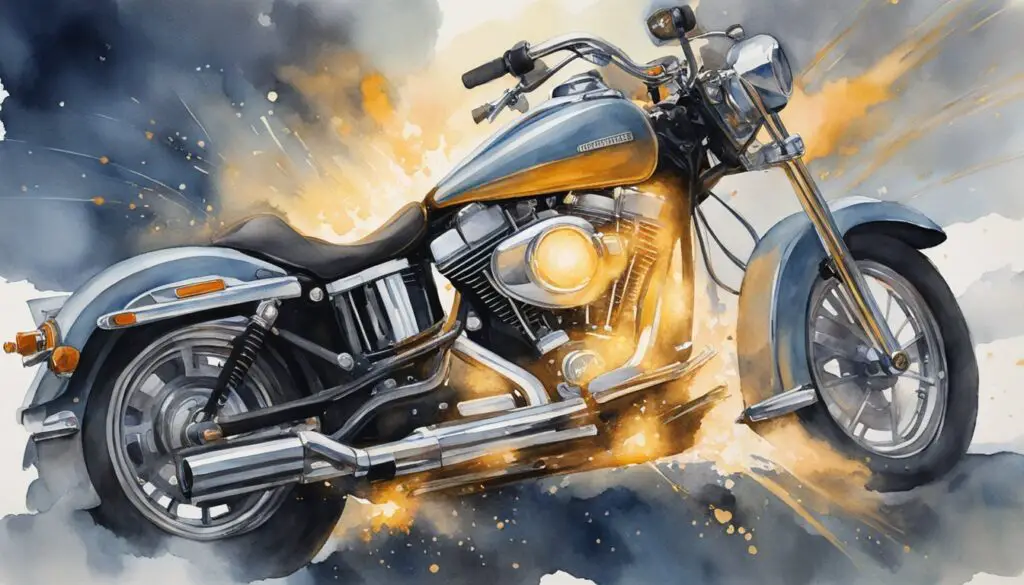
If your Harley Davidson is sputtering, it could be due to issues with the ignition system. Here are some things to check:
Spark Plugs and Wires Condition
Your spark plugs and wires are essential components of your ignition system. Over time, they can become worn or damaged, leading to sputtering and other issues. To ensure your spark plugs and wires are in good condition, you should inspect them regularly.
Look for signs of wear or damage, such as cracks, corrosion, or burnt spots. If you notice any of these issues, it’s time to replace your spark plugs and wires. You can find replacement parts at your local Harley Davidson dealership or online.
Ignition Coil and Battery Inspection
The ignition coil and battery are also critical components of your ignition system. The ignition coil converts the battery’s low voltage into the high voltage needed to create a spark at the spark plugs. If the ignition coil is faulty, it can cause sputtering and other issues.
To check your ignition coil, you can use a multimeter to test the resistance between the primary and secondary terminals. If the resistance is too high or too low, it’s time to replace the ignition coil.
Your battery is also an essential component of your ignition system. If your battery is weak or not charging properly, it can cause sputtering and other issues. You should check your battery’s voltage regularly to ensure it’s within the manufacturer’s recommended range.
If your battery is not charging correctly, you may need to replace your charging system. You can find replacement parts at your local Harley Davidson dealership or online.
By regularly inspecting and maintaining your ignition system, you can help prevent sputtering and other issues with your Harley Davidson.
Engine Performance and Sensors
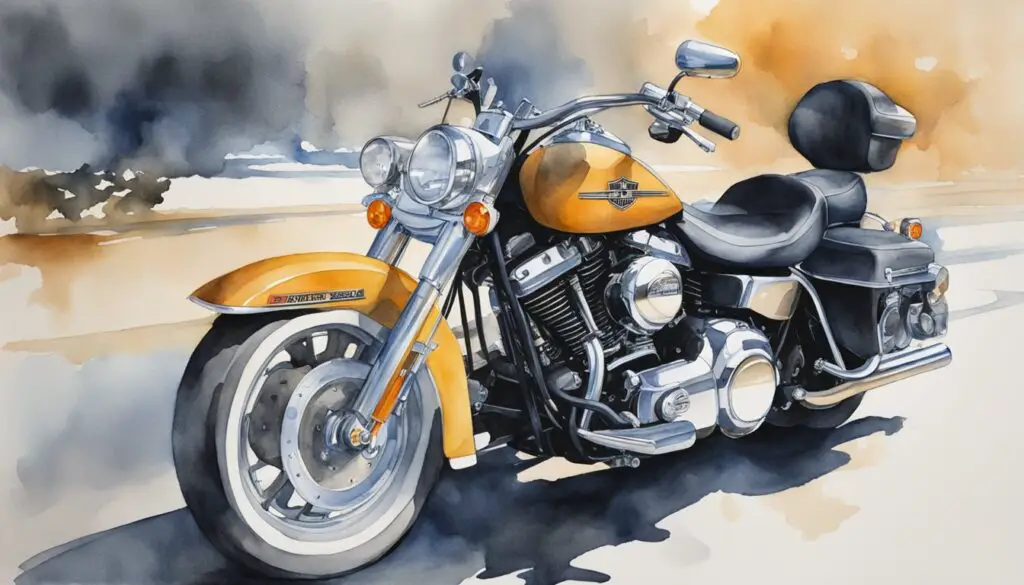
Throttle Response and Throttle Body
The throttle response of your Harley Davidson is an important factor in determining the engine’s performance. If you notice a loss of power or a slow response when you twist the throttle, it could be an issue with the throttle body. The throttle body is responsible for regulating the amount of air that enters the engine, which is necessary for combustion to occur.
To ensure that your throttle body is functioning properly, you should periodically check the throttle cable tension and adjust it if necessary. A loose throttle cable can cause a delay in throttle response, which can negatively impact the engine’s performance. Additionally, you can clean the throttle body with a throttle body cleaner to remove any buildup that may be hindering its performance.
Checking the Crank Position Sensor
The crank position sensor is a sensor that monitors the position of the crankshaft in your Harley Davidson’s engine. It is responsible for sending signals to the engine control module (ECM) to regulate the engine’s RPM and power output. If the crank position sensor is faulty, it can cause a range of issues, including sputtering and loss of power.
To check the crank position sensor, you can use a multimeter to test its resistance and compare it to the manufacturer’s specifications. If the resistance is outside of the acceptable range, it may need to be replaced. It is also important to visually inspect the wiring and connections to ensure that they are not damaged or corroded.
By regularly checking the throttle response and throttle body, as well as the crank position sensor, you can help ensure that your Harley Davidson is performing at its best. If you notice any issues with engine performance or sputtering, it is important to address them promptly to prevent further damage to the engine.
Electrical and Wiring Considerations
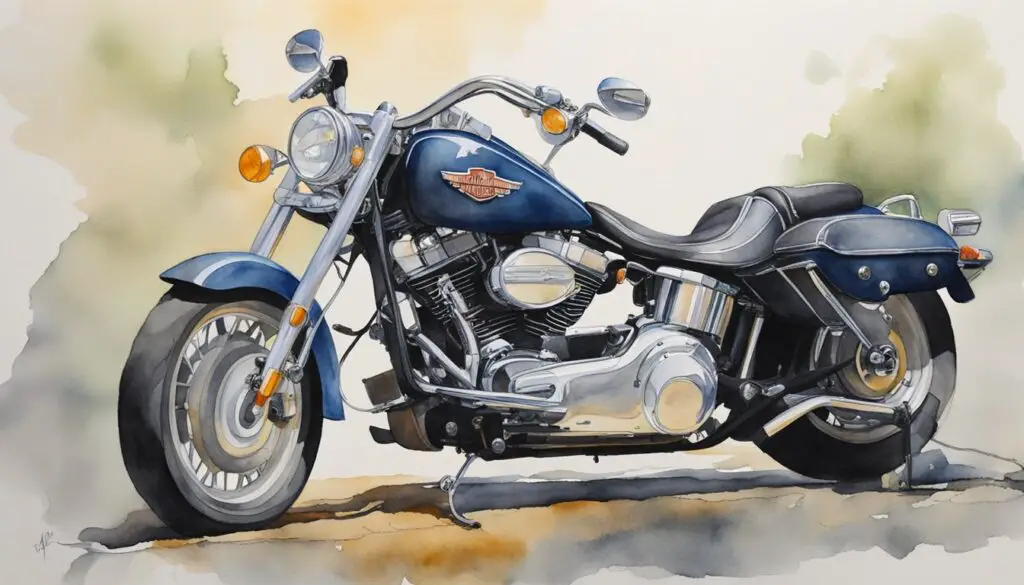
If you’re experiencing sputtering issues with your Harley Davidson, it’s important to consider the electrical system and wiring. Here are a few things to keep in mind:
Assessing the Electrical System
First, make sure that your battery is fully charged and in good condition. A weak battery can cause sputtering and other issues. You should also check your grounds to make sure they are clean and tight. A loose or dirty ground can cause electrical problems.
Next, check your ignition switch. Make sure it’s in good working order and that the connections are tight. If your ignition switch is faulty, it can cause sputtering and other issues.
Wiring and Connections
Wiring and connections can also cause sputtering issues. Make sure that all of your wiring is in good condition and that there are no frayed or damaged wires. You should also check your plug wires and coils to make sure they are in good condition.
If you find any damaged wires or connections, you should replace them immediately. Use a wire brush to clean any corroded connections before reattaching them.
In summary, when troubleshooting sputtering issues with your Harley Davidson, it’s important to consider the electrical system and wiring. Make sure your battery is fully charged and in good condition, check your grounds and ignition switch, and inspect your wiring and connections for damage or corrosion. By addressing these issues, you can help prevent sputtering and other electrical problems with your Harley Davidson.
Motorcycle Maintenance Best Practices
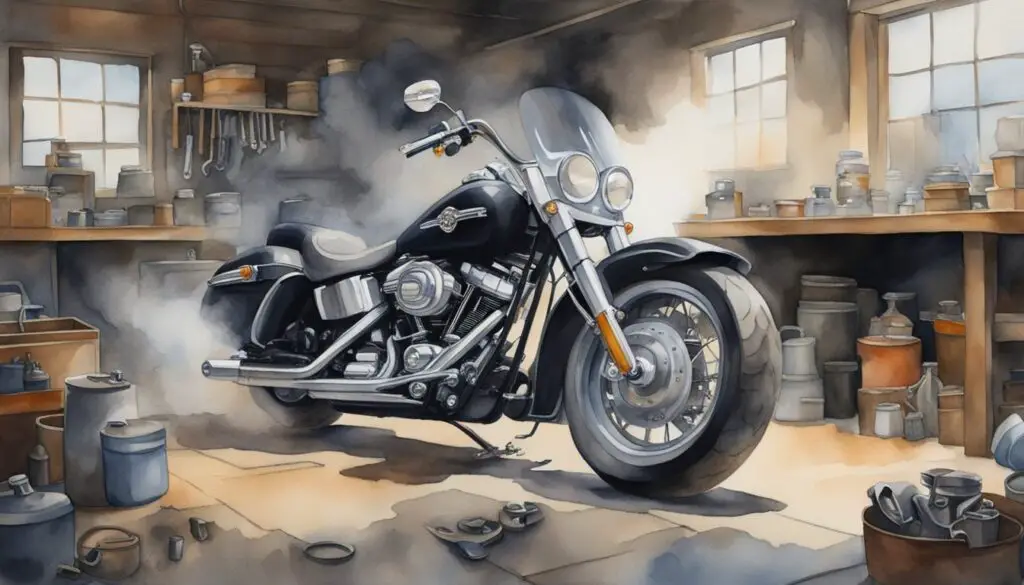
Regular Maintenance Schedule
Maintaining your Harley-Davidson motorcycle is essential to keep it in good condition and avoid issues such as sputtering. Regular maintenance includes oil changes, checking tire pressure, inspecting brakes, and cleaning the air filter. You should follow the manufacturer’s recommended maintenance schedule to ensure your bike is running smoothly.
One of the most important aspects of motorcycle maintenance is oil changes. Regular oil changes can help prevent engine damage and improve performance. Check your owner’s manual for the recommended oil change interval. You should also inspect your bike’s brakes regularly to ensure they are functioning correctly.
Proactive Troubleshooting Steps
If you notice your Harley-Davidson motorcycle sputtering, there are a few proactive troubleshooting steps you can take. First, check the fuel system, as issues in this area are a common cause of sputtering. Check the fuel filter to ensure it is clean and free from debris. Replace it if necessary. You should also check the fuel injectors and clean or replace them if they are clogged or malfunctioning.
Another step you can take is to inspect the spark plugs. Worn or dirty spark plugs can cause sputtering. Replace them if necessary, and use the manufacturer’s recommended spark plugs for your bike. Finally, check the air filter and replace it if it is dirty.
In addition to these troubleshooting steps, you can also seek help from online forums. Harley-Davidson forums are a great resource for troubleshooting issues and getting advice from other riders. You can also consult a professional mechanic if you are unsure about how to fix the problem.
By following a regular maintenance schedule and taking proactive troubleshooting steps, you can keep your Harley-Davidson motorcycle running smoothly and avoid sputtering issues.
Advanced Diagnostics and Solutions
If you have tried the basic solutions and your Harley Davidson is still experiencing sputtering problems, it is time to move on to more advanced diagnostics. Here are some possible solutions for you to try.
Electronic Control Module (ECM) Analysis
The Electronic Control Module (ECM) is the brain of your Harley Davidson. It controls the fuel injection, ignition timing, and other critical engine functions. If the ECM is malfunctioning, it can cause sputtering, misfires, and cutting out.
To diagnose ECM problems, you need a diagnostic tool like the Screamin’ Eagle® Pro Street Tuner. This tool can read the error codes stored in the ECM and give you a detailed analysis of the problem. If there is a problem with the ECM, you may need to replace it or reprogram it.
Vacuum Leaks and Intake Manifold
Vacuum leaks can cause sputtering and other problems in your Harley Davidson. A vacuum leak occurs when there is a hole or crack in the vacuum line or intake manifold. This can cause a lean air/fuel mixture, which can lead to sputtering and stalling.
To diagnose vacuum leaks, you can use a smoke machine or propane torch. These tools can help you detect the location of the leak. Once you have located the leak, you can repair it by replacing the vacuum line or intake manifold.
Engine Timing and Performance
Engine timing and performance can also cause sputtering and other problems in your Harley Davidson. If the timing is off, the engine may not run smoothly, and you may experience sputtering and misfires.
To diagnose timing problems, you need a timing light. This tool can help you determine if the timing is off and if the problem is with the ignition or the fuel injection. You may need to adjust the timing or replace the ignition module or fuel injector to solve the problem.
By following these advanced diagnostics and solutions, you can get to the root of your Harley Davidson’s sputtering problem and get back on the road with a smooth-running engine.
Frequently Asked Questions
What could be causing my motorcycle to lose power and sputter during acceleration?
If your motorcycle is sputtering during acceleration, it could be due to a number of reasons. One common cause is a dirty air filter, which can restrict airflow to the engine and cause it to run poorly. Another possible cause is a clogged fuel filter, which can prevent fuel from reaching the engine properly. A faulty ignition system, such as a bad spark plug or ignition coil, can also cause sputtering during acceleration.
How do I troubleshoot intermittent sputtering in my bike’s performance?
Intermittent sputtering can be a tricky issue to diagnose, but there are a few steps you can take to troubleshoot the problem. Start by checking the air filter and fuel filter to make sure they are clean and functioning properly. Next, inspect the spark plugs and ignition system for any signs of damage or wear. If these components are all in good condition, you may need to take your bike to a mechanic for a more thorough inspection.
Why does my bike hesitate and make a sputtering sound when I try to speed up?
If your motorcycle hesitates and sputters when you try to speed up, it could be due to a clogged fuel injector or a problem with the fuel pump. A dirty air filter or faulty ignition system can also cause this issue. Make sure to check these components and replace or clean them as necessary.
What should I check if my motorcycle starts to bog down when I’m trying to accelerate?
If your motorcycle is bogging down during acceleration, it could be due to a clogged fuel filter or a dirty air filter. A faulty ignition system can also cause this issue. Check these components and replace or clean them as necessary.
Can fuel injection problems lead to my motorcycle sputtering at low RPMs?
Yes, fuel injection problems can cause sputtering at low RPMs. A clogged fuel injector or a faulty fuel pump can prevent fuel from reaching the engine properly, causing it to run poorly. Check these components and replace or clean them as necessary.
What maintenance steps can I take to fix sputtering issues in a twin cam engine?
To fix sputtering issues in a twin cam engine, start by checking the air filter and fuel filter to make sure they are clean and functioning properly. Next, inspect the spark plugs and ignition system for any signs of damage or wear. If these components are all in good condition, you may need to take your bike to a mechanic for a more thorough inspection. Regular maintenance, such as oil changes and tune-ups, can also help prevent sputtering issues in the future.
Last updated on May 13, 2024
